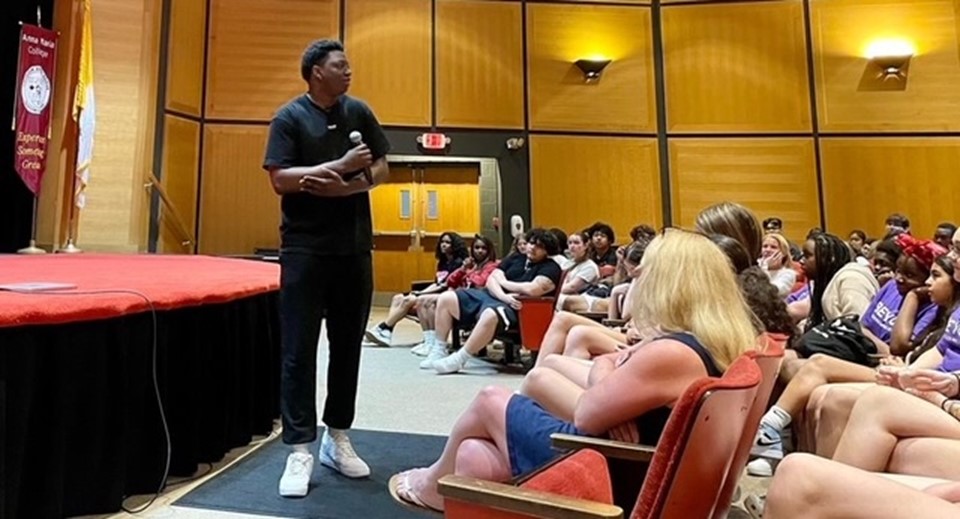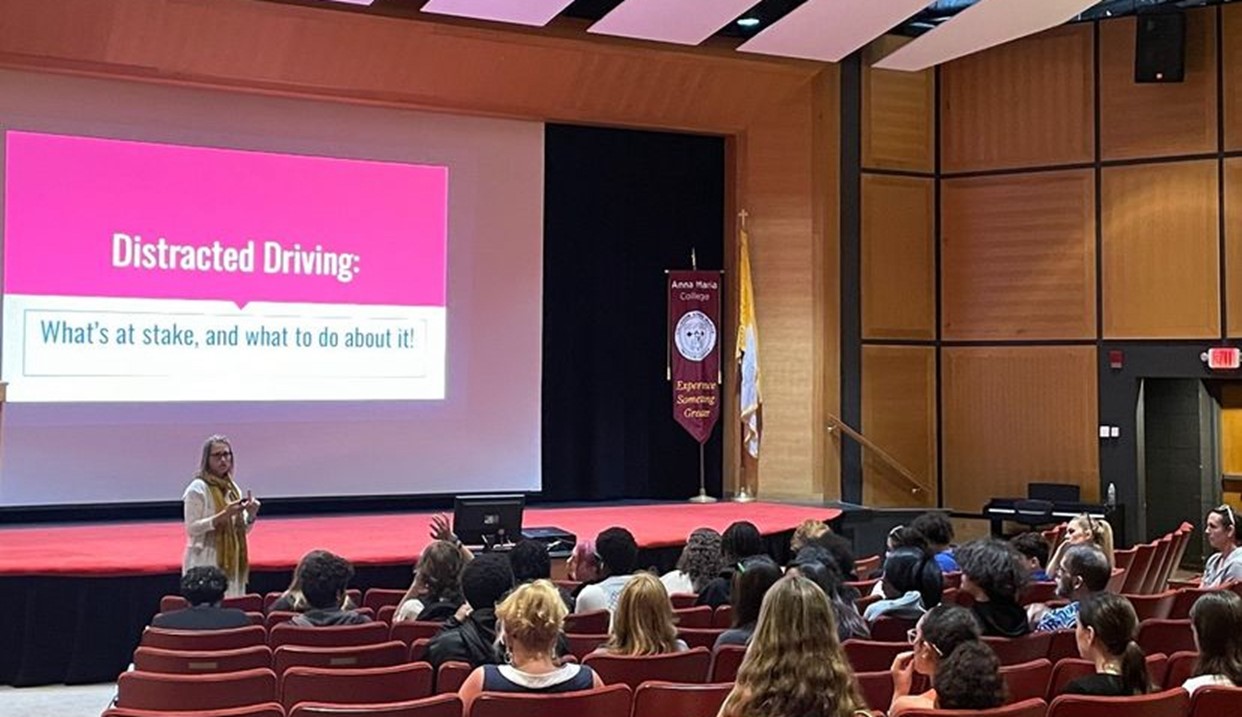|
Back to Prevention Stories
Student Wellness Conference
Hosted by:
Worcester County District Attorney s Office

Please briefly describe your Communities Talk activity.
The Worcester County District Attorney’s Office holds an annual Student Wellness Conference that welcomes middle and high school students from across the 60 communities within the district. With the support of Communities Talk funding, the 2024 conference was held at Anna Maria College and featured one keynote speaker, lunch, a resource fair, and a closing presentation. This year’s keynote speaker was Kaleb Joseph, a young man from the City of Worcester who has worked to overcome hardships in his personal life. Kaleb’s presentation, “From Pain to Purpose,” reminded students that everyone can find purpose, heal from their past, and build resilience in the face of life’s challenges. Kaleb spoke of his personal experiences and his ability to overcome difficulties. Participants learned tips on how to manage emotions, lean into vulnerability, build self-awareness, and cultivate a sense of personal identity. Our final presentation was on distracted driving. Emily Stein from Safe Roads presented to students on the dangers of texting and driving and distracted driving. Emily shared her story of losing her father in 2011. This tragedy was the result of a driver taking her eyes off the road to program her GPS while driving. The conference welcomed 319 attendees from 16 schools. A total of 19 Worcester County towns were represented at this event. The resource fair had a total of 29 provider agencies distributing materials and engaging with students.

How does alcohol and other drug misuse affect your community?

Worcester County, Massachusetts, is an expansive region of 60 communities that include large cities and small, rural towns. This sprawling area has been impacted by increasing opioid use, impaired driving tragedies, and the need for increased community response to substance use disorder. District Attorney Joseph Early Jr. is committed to providing prevention programming across the district. As part of this mission, the annual Student Wellness Conference is an effort to engage with high school students and improve the outcomes for young adults who frequently face exposure to the use of substances in their community, friend groups, or families.

Which prevention strategy(ies), as defined by SAMHSA’s Center for Substance Abuse Prevention, best fit your Communities Talk activity?
- Information Dissemination Strategy - focuses on improving awareness and knowledge of the effects of AOD issues on communities and families through “one-way” communication with the audience such as speaking engagements, health fairs, and distribution of print materials.

What goal(s) did you hope to accomplish with your Communities Talk activity?
- Hold meetings or discussion groups on alcohol and/or other drug misuse prevention.

Did you accomplish your goal(s)?
Yes

What challenge(s) did you face in planning your activity this year?
- Needed additional resources to conduct activity

How did you overcome these challenges?
Supplemental funding to pay for the entirety of the event was secured through other means.

What are your next steps?

- Host follow-up meetings or activities

If you’ve conducted Communities Talk activities in prior years, how has your repeated participation contributed to progress in achieving your prevention goals?
Repeated participation in Communities Talk has allowed us to improve our access to speakers who are able to effectively connect with middle and high school-aged students. This has increased participation and impact. Participants have shown strong engagement with speakers, and we have received consistently positive feedback.

Organizations that conduct Communities Talk activities often involve other organizations in the planning and execution of events. Please indicate which type(s) of organizations you involved in your activity planning.
- Law enforcement
- Secondary schools
- State and local government agencies (e.g., public health departments)

Which of the following best describes the primary audience(s) for your Communities Talk activity?

How did you reach and engage your primary audience(s) to encourage them to participate in your activity?
Event details and an invitation to participate are shared through email to the schools in Worcester County and on the District Attorney’s social media pages.

Which Communities Talk resources (or other SAMHSA resources) were most helpful for your activity?

- StopAlcoholAbuse.gov website
- StopAlcoholAbuse.gov What’s New email newsletter
- Communities Talk website
- Communities Talk toolkits
|
|